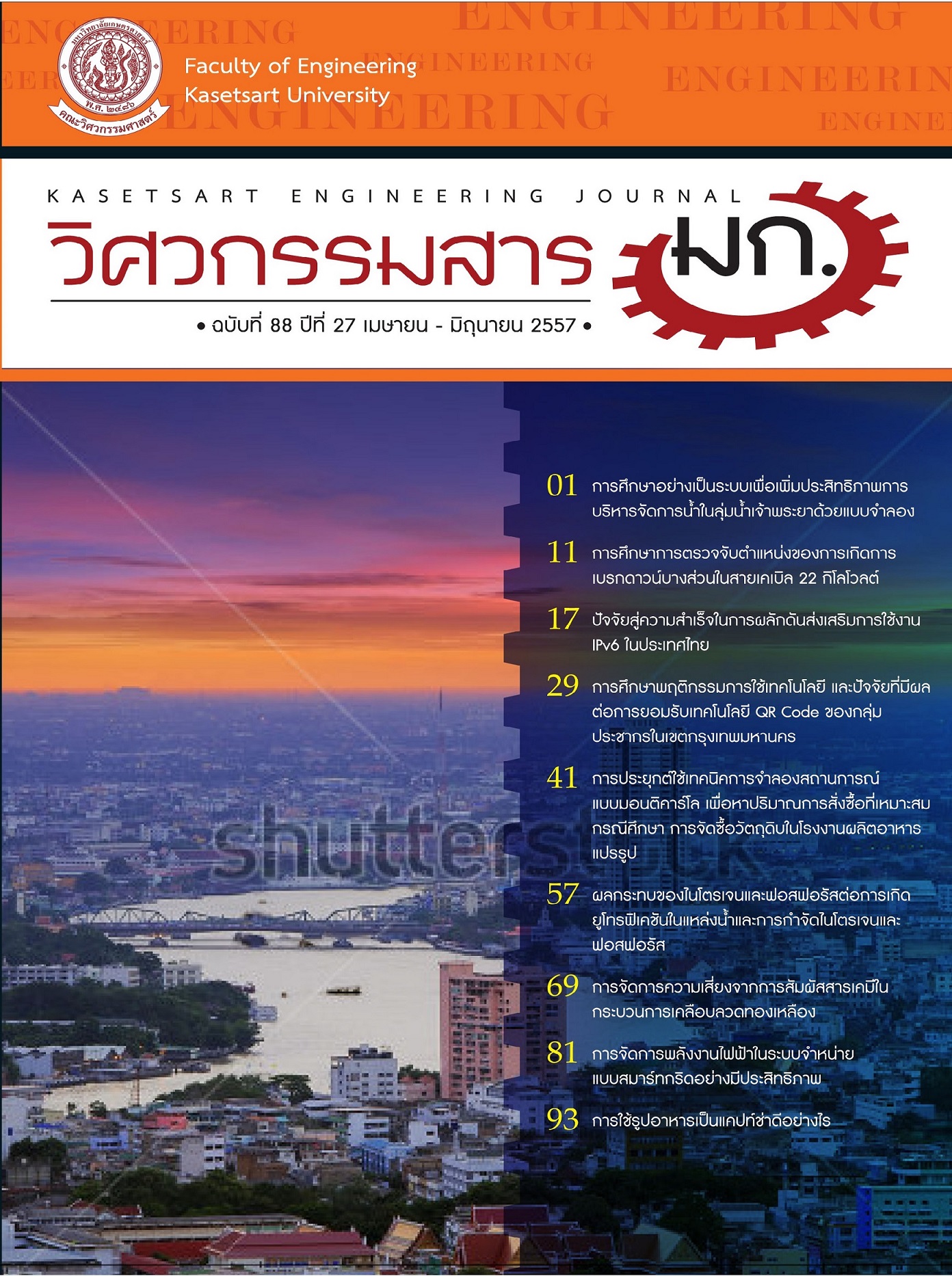การจัดการความเสี่ยงจากการสัมผัสสารเคมีในกระบวนการเคลือบลวดทองเหลือง
Keywords:
การจัดการความเสี่ยง, สารเคมี, กระบวนการเคลือบลวดทองเหลือง, risk management, chemical, brass coating processAbstract
งานวิจัยนี้มุ่งเน้นการศึกษาความเป็นอันตรายของสารเคมีแต่ละชนิดที่ใช้ในกระบวนการเคลือบ ลวดทองเหลืองของบริษัทผลิตลวดเสริมยางรถยนต์ โดยใช้หลักการประเมินความเสี่ยงอ้างอิงตามมาตรฐานของ Binde โดยแบ่งการประเมินอันตรายเป็น 2 กรณี ได้แก่ กรณีการรับสัมผัสสารเคมีทางระบบทางเดินหายใจ และกรณีการสัมผัสสารเคมีทางผิวหนัง จากการศึกษาพบว่าสารเคมีที่มีความเป็นอันตรายต่อระบบทางเดินหายใจของผู้ปฏิบัติงานคือ กรดซัลฟูริกเข้มข้น 10% มีระดับความเสี่ยงสูง ส่วนสารเคมีที่มีความเป็นอันตรายต่อผิวหนังของผู้ปฏิบัติงานมากที่สุดคือ กรดซัลฟูริกเข้มข้น 98% มีระดับความเสี่ยงปานกลาง การศึกษานี้ทำการทดลองใช้กรดไฮโดรคลอริกเข้มข้น 7.28% แทนการใช้กรดซัลฟูริก เข้มข้น 10% ในกระบวนการล้างทำความสะอาดเส้นลวด โดยกรดไฮโดรคลอริกเข้มข้น 7.28% ไม่มีผลต่อผิวของเส้นลวด และเมื่อทำการประเมินความเสี่ยงต่อสุขภาพพบว่ากรดไฮโดรคลอริกเข้มข้น 7.28% ช่วยลดระดับความเสี่ยงจากสูงเป็นความเสี่ยงปานกลาง
Chemical Exposing Risk Management in Brass Coating Process
This research aimed to study of chemical hazards in the brass coating process of the steel cord factory. The Binde’s standard method was applied for risk assessment. This assessment is divided in two main types based on health hazard chemicals contact i.e. respiratory contact and skin contact. Handling of sulfuric acid 10% posed high risk level especially for the operators’ respiratory. For sulfuric acid 98%, medium risk level what found for a significant chemical hazard of the operators’ skin effects. This study proposed the substitution sulfuric acid 10% by hydrochloric acid 7.28% for steel cleaning process. It had been demonstrated experimentally that the use of hydrochloric acid 7.28% did not have any negative effect on steel surface. On the other hand, according to the health risk assessment, it can help reduce the risk of chemical contact from high to moderate risk level.


